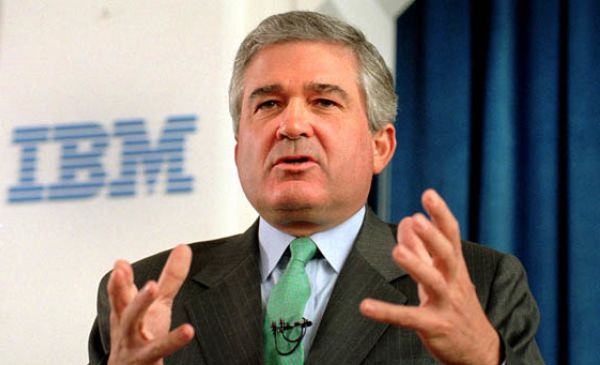Every day, brand owners are pitched opportunities to take their brand in a ‘new’ direction or to stay the course—by colleagues, by their agencies, because of the actions of competitors or by delegations of customers or suppliers. It can be, as many a marketing manager has told me, bewildering. And many struggle to balance the strategic need to move the brand forward over the longer term with the plethora of more immediate demands for response or action.
At a time when the role of running a brand is beset with challenges, how should brand teams make decisive moves? Perhaps by choosing to always think of themselves as challengers, regardless of their position in the market. And by acting in that manner to actively address what is challenging them.
There are many wonderful ideas in Adam Morgan’s classic book about being a successful challenger brand, Eating the Big Fish—but one of my favorites is the concept of over-commitment; of being willing to see past what others simply accept and choosing instead to throw an uncommon level of resource at an idea that will allow your brand to stand out.
That, as Morgan points out, comes down to being able to boldly and insightfully translate strategic intent into behaviors; behaviors that separate those who say they do from those who seriously seek the prize.
Marketers talk (a lot) about the ideas they are committed to—storytelling, experiences, digital transformation, relationships, purpose … And they are quick to tell themselves and each other that they are doing a good job of bringing these things to market. But the numbers tell a different story. One piece of research I saw recently said that while 85% of brands think they are delivering great experiences, only 15% of customers think they are receiving them.
So there’s a significant gap between what brands believe they have committed to and what customers feel they have committed to. I’ve seen similar discrepancies around other things that brands hold down.
(Before you say it, I know we all see stats every day and that, to put it politely, interpretations vary. But I’m not talking about the numbers themselves so much as situations where brands see themselves achieving one thing and customers don’t, because that’s where the opportunities lie to apply Morgan’s thinking.)
It’s easy to somehow blame the customer when things like this are pointed out; to say that one group of consumers or another are difficult to please or that they are disloyal or disinterested. But I suspect the key reason lies elsewhere. Marketers are distracted. They are so busy wanting to be good marketers that they are trying to juggle all the different colored balls as well as everyone around them, instead of doing what Morgan has suggested: doing one thing to an extraordinary degree.
Two of the biggest obstacles to success, in my opinion, are group-think and, in Hilton Barbour’s words, ‘shiny bright object hunting’. Companies are so busy trying to stay ‘current’ in these times of endless change and so determined to do so in a risk-averse way that they have devolved to what I refer to ‘frantic compliance’: working faster and faster to be more like, sound more like, work more like and brand more like the companies around them.
But thinking like a challenger requires rethinking not just what your brand does, but why. It takes discipline to step back and reflect on two disturbingly simple thoughts: what short-fall do we want to be famous for addressing; and what will it take for us to succeed at that (when so many others haven’t)? It’s never going to be easy to put all the other juggling balls down and just focus on one. That level of clarity and reductionism is going to make everyone nervous because it looks so risky; it feels like an “all-in” strategy.
Over-commitment is much more calculated than that of course. It stems from seeing—really seeing—what is missing in a market and choosing to back yourself to deliver that in ways that no-one else has. To go back to that research earlier about the experience gap, while every marketer today may be talking about experiences (in fact, I suggested recently this particular concept was quickly becoming the new sugar), one brand could challenge itself to close that gap in ways others wouldn’t dare. Same goes for storytelling, relationships, purpose … the opportunities are there for brands to over-index in a particular competitive aspect if they are prepared to focus on that and ask themselves the hard questions needed to make that happen.
But how? How does a brand go about deciding to over-commit? Camelia Ghiurca makes some great suggestions in a piece on winning strategies.
1. Go Binary – simplify the choice set for your brand and for consumers by making the market about ‘them’ and ‘us’. As Ghiurca points out, “most brand leaders normally operate with a “just enough” strategy. In order to have a chance, [challenger] brands must overcommit and, of course, over-perform.” To do that, they must first over-simplify everything around them. So they must reduce everything that’s being presented to them (particularly internally) to the resolution of a singular issue in a way that everyone else won’t or can’t.
She then quotes Stephen King to define what it takes for a brand to succeed:
2. Be Coherent (Not Compliant). In other words, make sure that everything you do reports to an idea (but not necessarily a creative expression) that customers come to rely on you to deliver in exceptional ways. And, by implication, commit to making that a reality as a business.
3. Remain Unique—by staying ahead of others as they seek to close the gap. Over-commitment requires over-planning. It’s about knowing not just what you have committed to, but what you will need to commit to going forward in order to stay ahead of the pack. Too many brands that instigate something interesting don’t follow up on it fast enough or dramatically enough to continue taking the rest of the market by surprise.
4. Be Immediate And Salient For Your Customers. Judge the success of what you have over-committed to by how deeply they choose to commit to it.
Some will say this idea is reminiscent of the once-fashionable “one big idea”. It is—to a point. Except that in order to work, over-commitment is less about beating a single brand message drum and much more focused on solving a problem that consumers care about. It plays out less in what customers see and much more in what they receive and why that appeals to what’s important to them.
Think about everything you’re trying to be as a business right now; everything you’ve committed to doing, all the ways that your budget is pulled. What would happen if you put most of that to one side and focused instead on doing one thing, better, faster, stronger, more inspiringly and more profitably than anyone else? How good could you be if you wanted that to happen badly enough? It’s not the answer for everyone of course, because then it just becomes the latest fashionable behavior. But for some—wrestling to find a position and a voice for themselves today—it’s an option well worth considering.
The Blake Project Can Help: Disruptive Brand Strategy Workshop
Branding Strategy Insider is a service of The Blake Project: A strategic brand consultancy specializing in Brand Research, Brand Strategy, Brand Licensing and Brand Education




